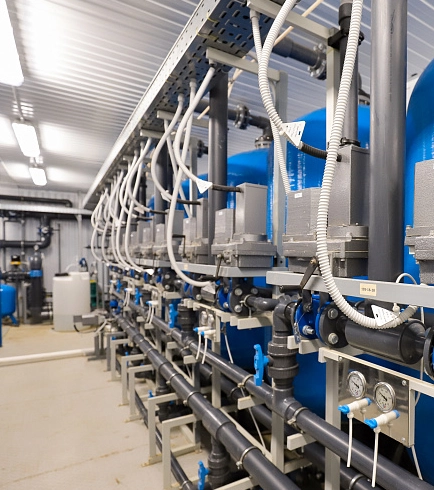Jul . 29, 2024 23:37 Back to list
Innovative Solutions for High-Pressure Submersible Pump Applications in Challenging Environments and Industries
High-Pressure Submersible Pumps Essential Tools for Modern Industries
High-pressure submersible pumps play a crucial role in various industrial applications, particularly in sectors like oil and gas, mining, municipal water supply, and wastewater management. Designed to operate underwater, these pumps are engineered to overcome significant depths and high-pressure conditions, delivering efficient and reliable performance in challenging environments.
Functionality and Design
High-pressure submersible pumps are specifically designed to function submerged in fluids. Unlike surface pumps that rely on suction to draw fluid, submersible pumps are equipped with a sealed motor that allows them to be placed directly in the fluid they are pumping. This design feature not only helps in reducing the risk of cavitation but also enhances the overall efficiency of the pumping process.
These pumps are constructed from durable materials, often stainless steel or high-grade thermoplastics, to withstand corrosive environments, especially in applications involving seawater, chemicals, or wastewater. Additionally, they are designed with a multi-stage impeller system that enables them to generate high pressure, making them suitable for pumping fluids over long distances or to significant heights.
Applications
One of the primary applications of high-pressure submersible pumps is in the oil and gas industry, where they are used for fluid extraction and transportation from deep wells. In offshore drilling, these pumps are vital for maintaining fluid flow from the seabed to the surface. Similarly, in mining operations, they facilitate the removal of groundwater and sludge, safeguarding mining processes and ensuring operational efficiency.
high pressure submersible pump

In municipal applications, high-pressure submersible pumps are essential for water supply systems, particularly in situations requiring reliable water distribution over significant elevations. They are also employed in wastewater treatment facilities, where they help in moving sewage and wastewater through various stages of treatment.
Advantages
The use of high-pressure submersible pumps offers numerous advantages. Their ability to function effectively at depths and high pressure significantly enhances their operational range. Moreover, minimizing the need for complex surface pumping installations often results in reduced infrastructure costs and simplifies maintenance procedures.
These pumps also contribute to energy efficiency. Operating submerged reduces the energy loss associated with suction lift and significantly enhances the pump's hydraulic performance. Many modern submersible pumps are designed to be energy-efficient, often featuring variable speed drives that allow for optimized performance based on demand.
Challenges and Solutions
Despite their advantages, high-pressure submersible pumps face operational challenges. Inefficiencies can occur due to sediment accumulation, wear and tear, or motor overheating. Regular maintenance and monitoring are imperative to ensure the reliability and longevity of these pumps. Some manufacturers offer remote monitoring systems that allow for real-time performance tracking, which can preemptively identify issues before they escalate into significant problems.
In summary, high-pressure submersible pumps are indispensable components in a wide array of industrial applications. Their robust design, efficiency in high-pressure environments, and versatility make them ideal for handling challenging pumping tasks across different sectors. As technology continues to advance, we can expect further innovations in the design and functionality of these pumps, solidifying their role as essential tools in modern industrial practices. Embracing these advancements will not only enhance operational efficiency but also contribute to sustainable practices in resource management.
-
Submersible Water Pump: The Efficient 'Power Pioneer' of the Underwater World
NewsJul.01,2025
-
Submersible Pond Pump: The Hidden Guardian of Water Landscape Ecology
NewsJul.01,2025
-
Stainless Well Pump: A Reliable and Durable Pumping Main Force
NewsJul.01,2025
-
Stainless Steel Submersible Pump: An Efficient and Versatile Tool for Underwater Operations
NewsJul.01,2025
-
Deep Well Submersible Pump: An Efficient 'Sucker' of Groundwater Sources
NewsJul.01,2025
-
Deep Water Well Pump: An Efficient 'Sucker' of Groundwater Sources
NewsJul.01,2025
-
 Submersible Water Pump: The Efficient 'Power Pioneer' of the Underwater WorldIn the field of hydraulic equipment, the Submersible Water Pump has become the core equipment for underwater operations and water resource transportation due to its unique design and excellent performance.Detail
Submersible Water Pump: The Efficient 'Power Pioneer' of the Underwater WorldIn the field of hydraulic equipment, the Submersible Water Pump has become the core equipment for underwater operations and water resource transportation due to its unique design and excellent performance.Detail -
 Submersible Pond Pump: The Hidden Guardian of Water Landscape EcologyIn courtyard landscapes, ecological ponds, and even small-scale water conservancy projects, there is a silent yet indispensable equipment - the Submersible Pond Pump.Detail
Submersible Pond Pump: The Hidden Guardian of Water Landscape EcologyIn courtyard landscapes, ecological ponds, and even small-scale water conservancy projects, there is a silent yet indispensable equipment - the Submersible Pond Pump.Detail -
 Stainless Well Pump: A Reliable and Durable Pumping Main ForceIn the field of water resource transportation, Stainless Well Pump has become the core equipment for various pumping scenarios with its excellent performance and reliable quality.Detail
Stainless Well Pump: A Reliable and Durable Pumping Main ForceIn the field of water resource transportation, Stainless Well Pump has become the core equipment for various pumping scenarios with its excellent performance and reliable quality.Detail
